Vietnam: Hanoi Part 6 - More Old Quarter Street Scenes
Aug 31, 2022 14:41:17 #
As we continued our cyclo ride through Hanoi's Old Quarter, we were treated to more fascinating street scenes which I continued to shoot with my small Canon Powershot SX-60. The drab streets were brightened by the bunches of colorful flowers and the wares hanging in the storefronts. Here's some additional photos and narrative about Hanoi's Old Quarter:
Hanoi's Old Quarter: The 36 Streets
by Barbara Cohen, Oct 1, 1994 | Destinations: Vietnam / Hanoi
As the oldest continuously developed area of Vietnam, Hanoi's Old Quarter has a history that spans 2,000 years and represents the eternal soul of the city. Located between the Lake of the Restored Sword, the Long Bien Bridge, a former city rampart, and a citadel wall, the Old Quarter started as a snake and alligator-infested swamp. It later evolved into a cluster of villages made up of houses on stilts, and was unified by Chinese administrators who built ramparts around their headquarters. The area was named "Dominated Annam" or "Protected South" by the Chinese.
The Old Quarter began to acquire its reputation as a crafts area when the Vietnamese attained independence in the 11th century and King Ly Thai To built his palace there. In the early 13th century, the collection of tiny workshop villages which clustered around the palace walls evolved into craft cooperatives, or guilds. Skilled craftsmen migrated to the Quarter, and artisan guilds were formed by craftsmen originating from the same village and performing similar services. Members of the guilds worked and lived together, creating a cooperative system for transporting merchandise to the designated streets in the business quarter.
Because inhabitants of each street came from the same village, streets developed a homogeneous look. Commoners' homes evolved out of market stalls, before streets were formed. Because storekeepers were taxed according to the width of their storefront, storage and living space moved to the rear of the buildings. Consequently, the long and narrow buildings were called "tube houses." Typical measurements for such houses are 3 meters wide by 60 meters long.
The Old Quarter has a rich religious heritage. When the craftsmen moved from outlying villages into the capital, they brought with them their religious practices. They transferred their temples, pagodas and communal houses to their new location. Each guild has one or two religious structures and honors its own patron saint or founder. Therefore, on each street in the Old Quarter there is at least one temple. Now, many of the old temples in the Old Quarter have been transformed into shops and living quarters, but some of the old buildings' religious roots can still be recognized by the architecture of their roofs.
Although the old section of Hanoi is often called the "36 Old Streets," there are more than 36 actual streets. Some researchers believe that the number 36 came from the 15th century when there might have been 36 guild locations, which were workshop areas, not streets. When streets were later developed, the guild names were applied to the streets. Others attribute the 36 to a more abstract concept. The number nine in Asia represents the concept of "plenty." Nine times the four directions makes 36, which simply means "many." There are now more than 70 streets in the area.
Some streets have achieved fame by their inclusion in popular guidebooks. Han Gai Street offers silk clothing ready-made and tailored, embroidery, and silver products. Hang Quat, the street that formerly sold silk and feather fans, now stuns the visitor by its brilliantly colored funeral and festival flags and religious objects and clothing. To Thinh Street connects the above two and is still the wood turner's street. Hang Ma glimmers with shiny paper products, such as gift wrappings, wedding decorations and miniature paper objects to burn for the dead. Lan Ong Street is a sensual delight of textures and smells emanating from the sacks of herbal medicinal products: leaves, roots, barks, and powders.
http://thingsasian.com/story/hanois-old-quarter-36-streets
For additional images of Hanoi, Please see my previous posts:
https://www.uglyhedgehog.com/t-749364-1.html
https://www.uglyhedgehog.com/t-749643-1.html
https://www.uglyhedgehog.com/t-749886-1.html
https://www.uglyhedgehog.com/t-750093-1.html
https://www.uglyhedgehog.com/t-750394-1.html
I hope you enjoy these!
Mark
Hanoi's Old Quarter: The 36 Streets
by Barbara Cohen, Oct 1, 1994 | Destinations: Vietnam / Hanoi
As the oldest continuously developed area of Vietnam, Hanoi's Old Quarter has a history that spans 2,000 years and represents the eternal soul of the city. Located between the Lake of the Restored Sword, the Long Bien Bridge, a former city rampart, and a citadel wall, the Old Quarter started as a snake and alligator-infested swamp. It later evolved into a cluster of villages made up of houses on stilts, and was unified by Chinese administrators who built ramparts around their headquarters. The area was named "Dominated Annam" or "Protected South" by the Chinese.
The Old Quarter began to acquire its reputation as a crafts area when the Vietnamese attained independence in the 11th century and King Ly Thai To built his palace there. In the early 13th century, the collection of tiny workshop villages which clustered around the palace walls evolved into craft cooperatives, or guilds. Skilled craftsmen migrated to the Quarter, and artisan guilds were formed by craftsmen originating from the same village and performing similar services. Members of the guilds worked and lived together, creating a cooperative system for transporting merchandise to the designated streets in the business quarter.
Because inhabitants of each street came from the same village, streets developed a homogeneous look. Commoners' homes evolved out of market stalls, before streets were formed. Because storekeepers were taxed according to the width of their storefront, storage and living space moved to the rear of the buildings. Consequently, the long and narrow buildings were called "tube houses." Typical measurements for such houses are 3 meters wide by 60 meters long.
The Old Quarter has a rich religious heritage. When the craftsmen moved from outlying villages into the capital, they brought with them their religious practices. They transferred their temples, pagodas and communal houses to their new location. Each guild has one or two religious structures and honors its own patron saint or founder. Therefore, on each street in the Old Quarter there is at least one temple. Now, many of the old temples in the Old Quarter have been transformed into shops and living quarters, but some of the old buildings' religious roots can still be recognized by the architecture of their roofs.
Although the old section of Hanoi is often called the "36 Old Streets," there are more than 36 actual streets. Some researchers believe that the number 36 came from the 15th century when there might have been 36 guild locations, which were workshop areas, not streets. When streets were later developed, the guild names were applied to the streets. Others attribute the 36 to a more abstract concept. The number nine in Asia represents the concept of "plenty." Nine times the four directions makes 36, which simply means "many." There are now more than 70 streets in the area.
Some streets have achieved fame by their inclusion in popular guidebooks. Han Gai Street offers silk clothing ready-made and tailored, embroidery, and silver products. Hang Quat, the street that formerly sold silk and feather fans, now stuns the visitor by its brilliantly colored funeral and festival flags and religious objects and clothing. To Thinh Street connects the above two and is still the wood turner's street. Hang Ma glimmers with shiny paper products, such as gift wrappings, wedding decorations and miniature paper objects to burn for the dead. Lan Ong Street is a sensual delight of textures and smells emanating from the sacks of herbal medicinal products: leaves, roots, barks, and powders.
http://thingsasian.com/story/hanois-old-quarter-36-streets
For additional images of Hanoi, Please see my previous posts:
https://www.uglyhedgehog.com/t-749364-1.html
https://www.uglyhedgehog.com/t-749643-1.html
https://www.uglyhedgehog.com/t-749886-1.html
https://www.uglyhedgehog.com/t-750093-1.html
https://www.uglyhedgehog.com/t-750394-1.html
I hope you enjoy these!
Mark
My driver sped up to allow me to get this shot of my girl!
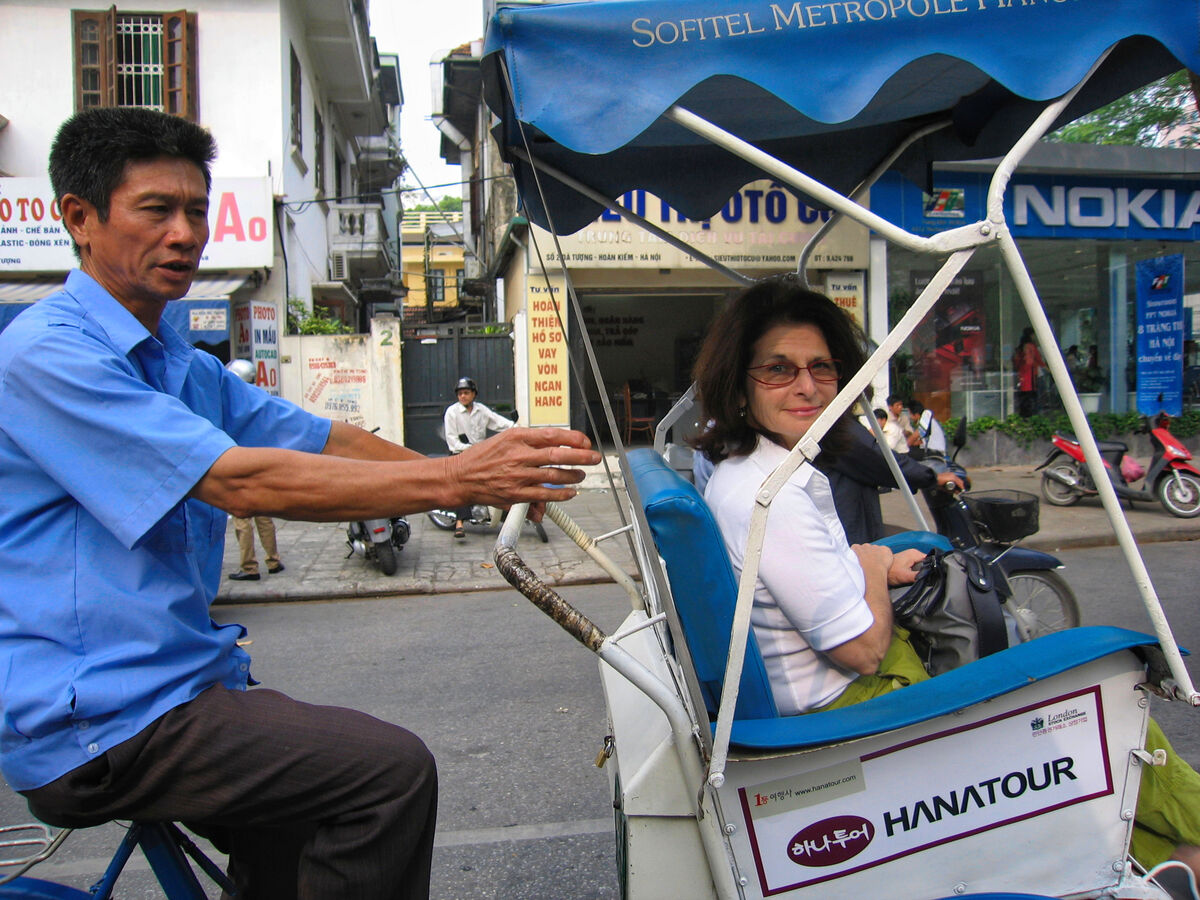
(Download)
Grandmas and granddaughters are the same all over the world.
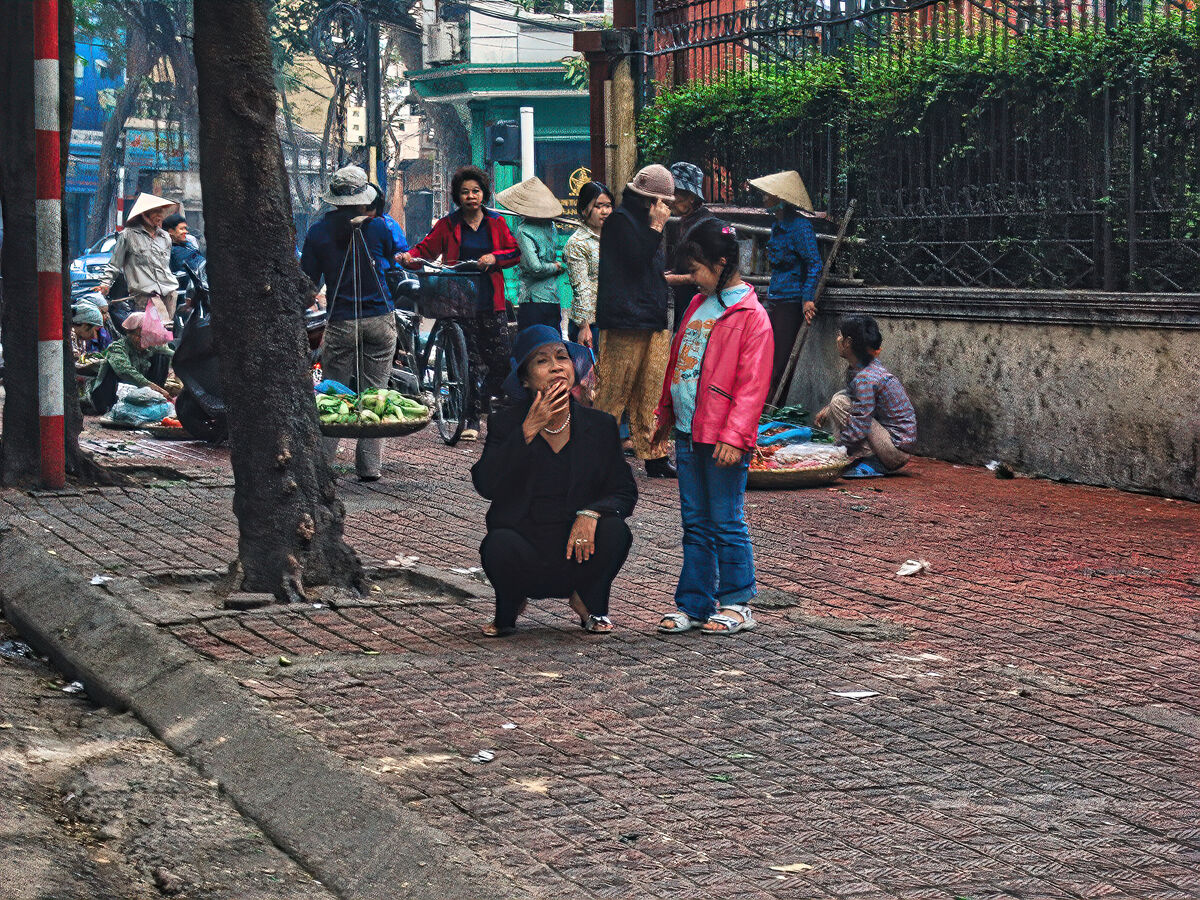
(Download)
The bamboo shoulder pole, quang ganh, has for long been a useful piece of equipment for Vietnamese farmers in the countryside to carry their produce
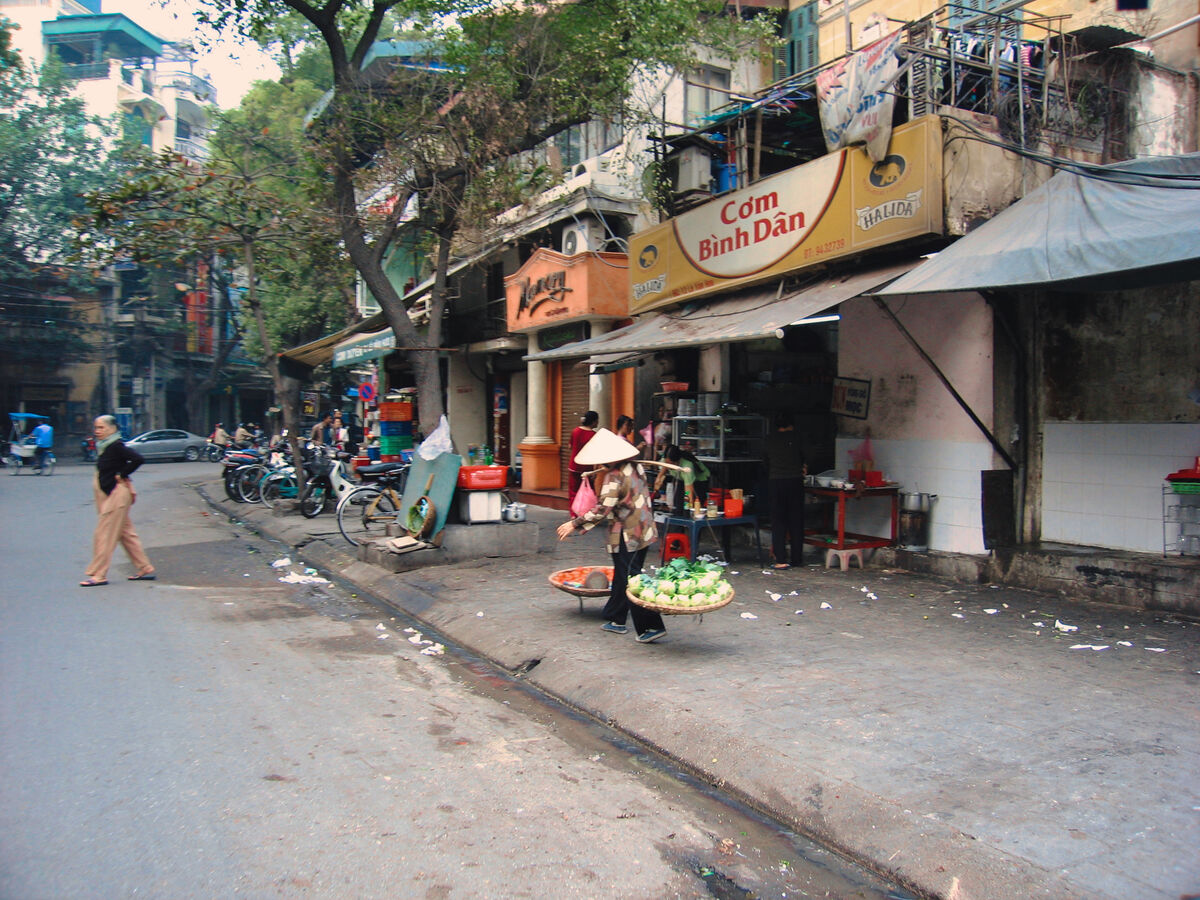
(Download)
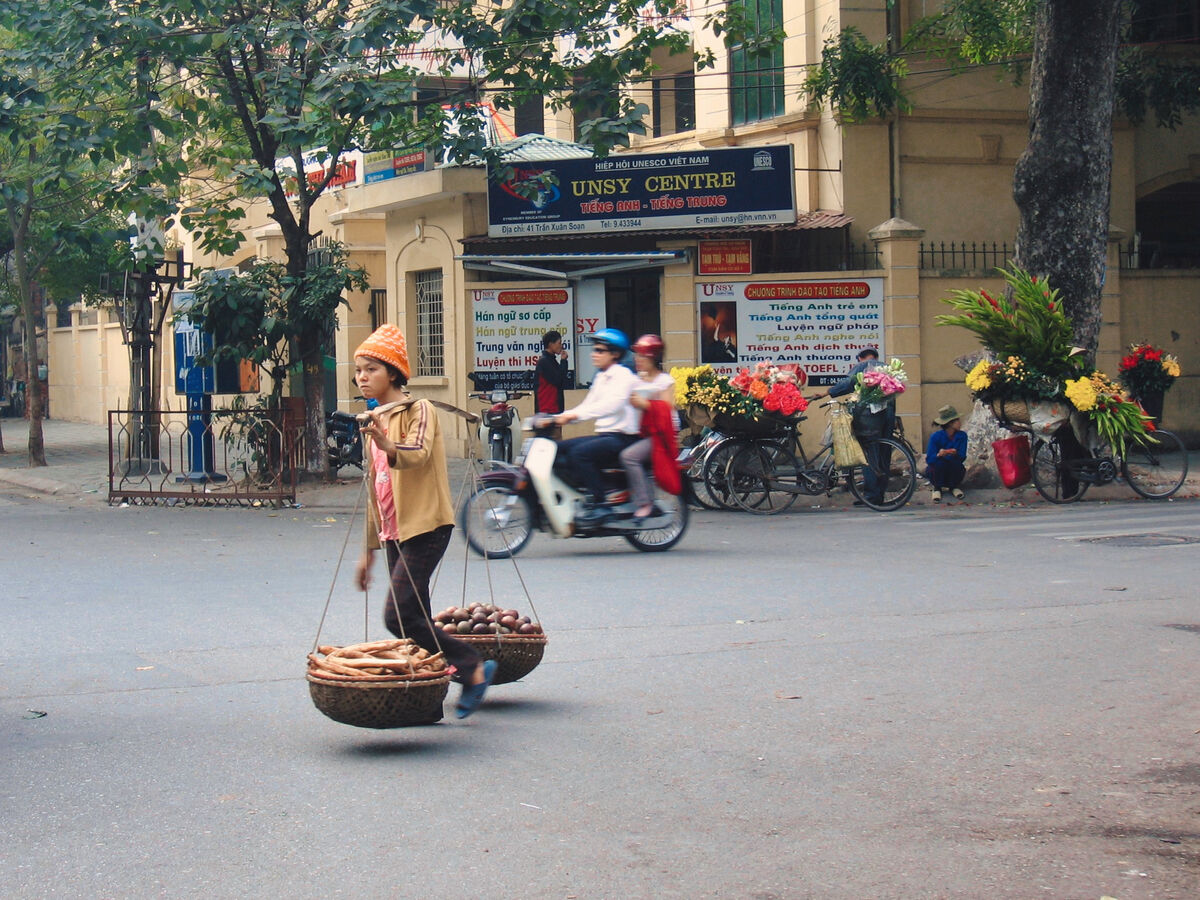
(Download)

(Download)

(Download)
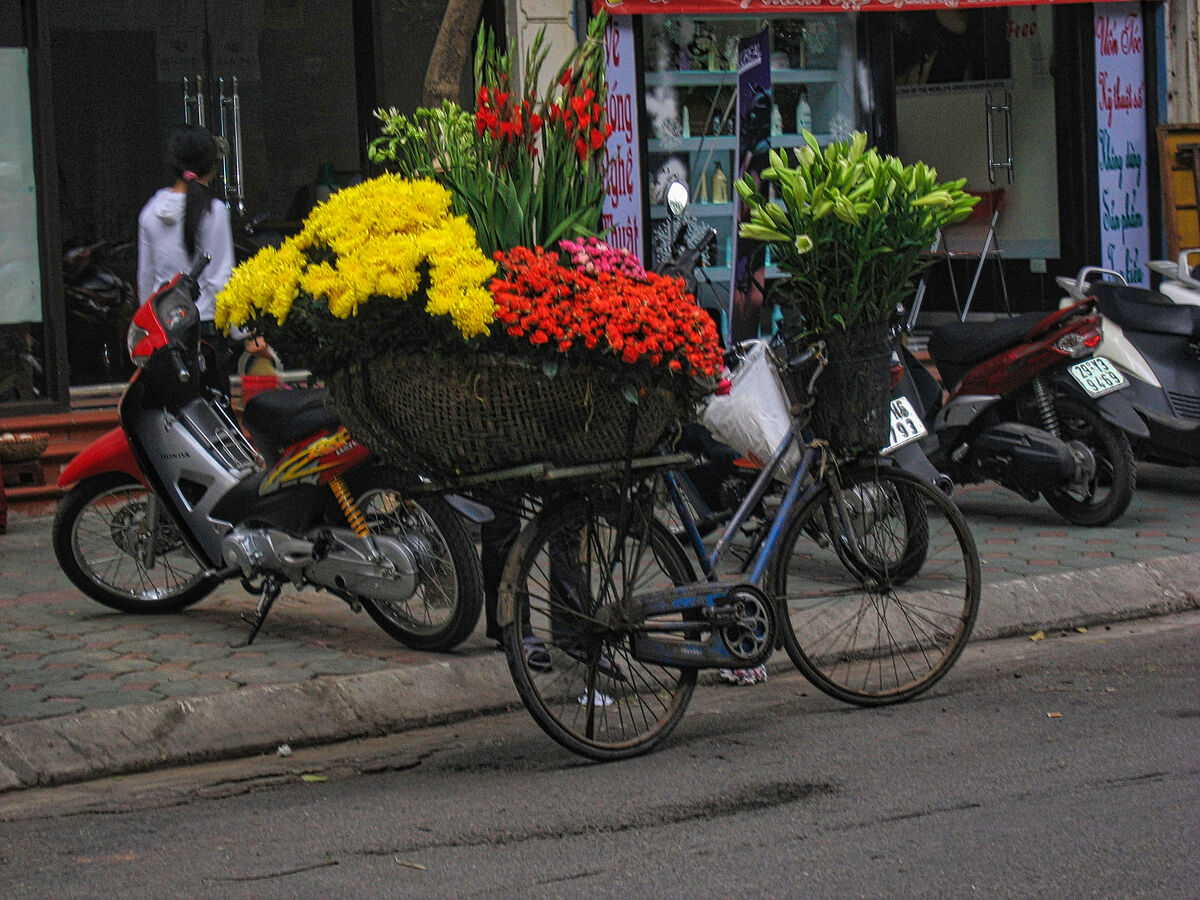
(Download)
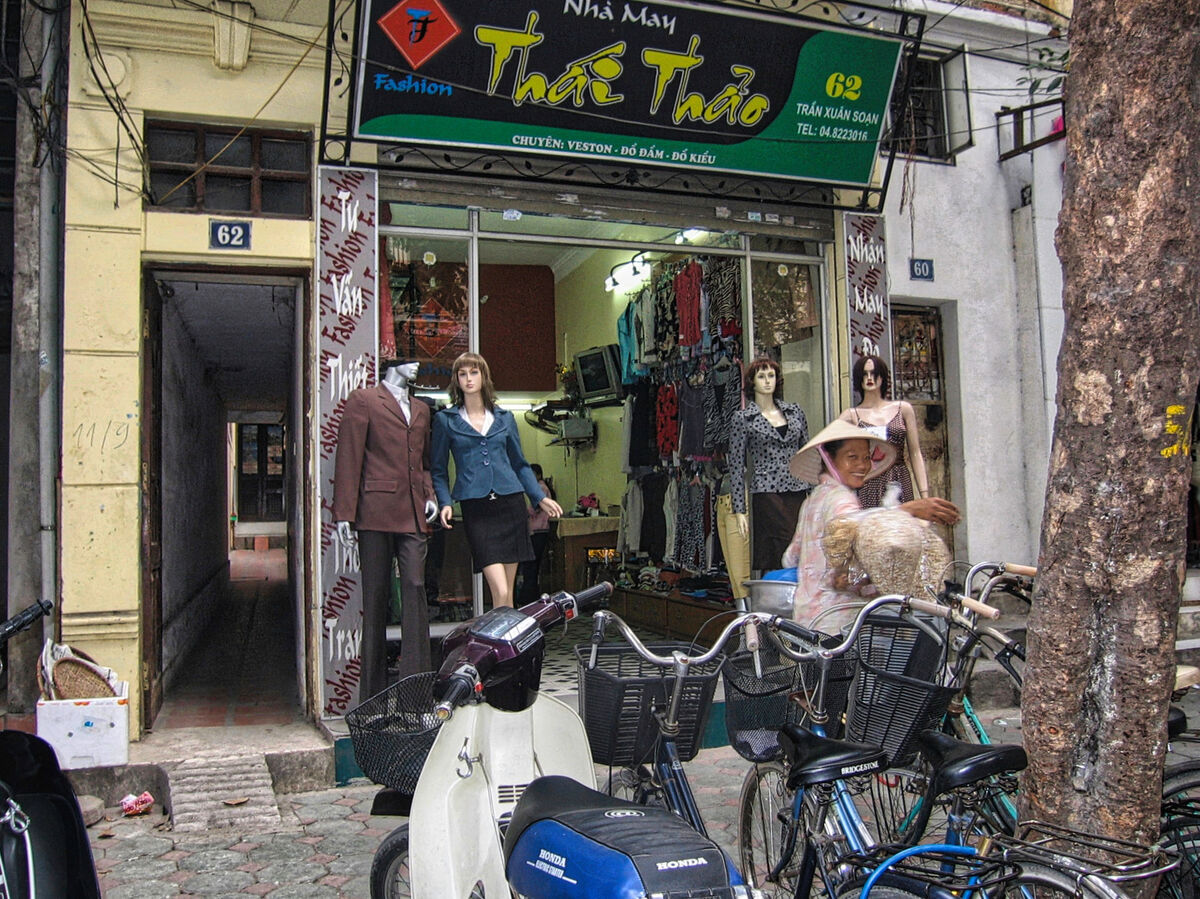
(Download)
Pedestrians just walk, counting on traffic to avoid them. Stopping or hesitating increases liklihood of getting hit.
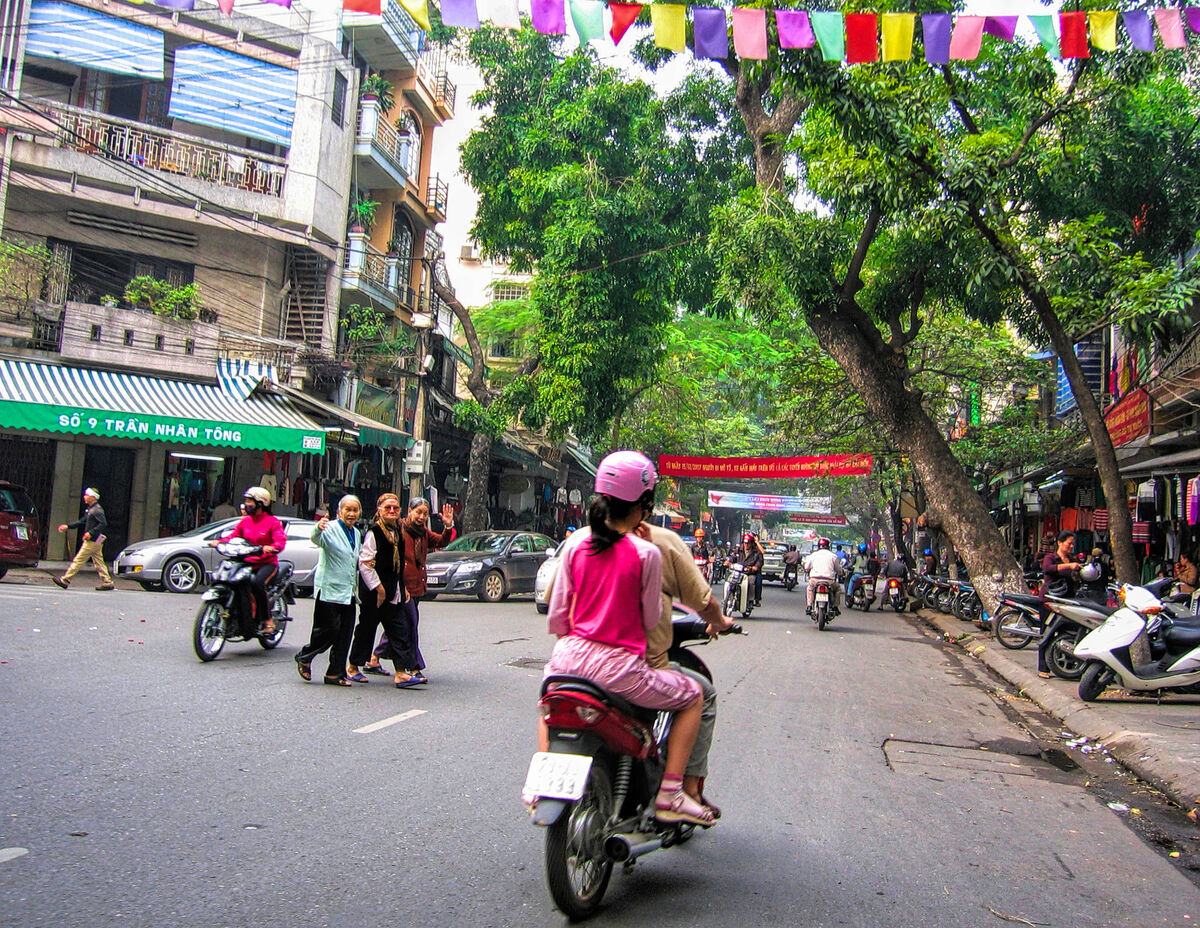
(Download)

(Download)
Aug 31, 2022 14:44:04 #
Aug 31, 2022 14:58:51 #
Aug 31, 2022 15:07:28 #
Aug 31, 2022 15:53:40 #
Aug 31, 2022 16:03:25 #
Really interesting, Mark. The flowers do add color. There are an awful lot of bicycles and scooters.
Aug 31, 2022 16:19:00 #
Aug 31, 2022 16:59:52 #
Aug 31, 2022 18:17:04 #
NMGal wrote:
Really interesting, Mark. The flowers do add color. There are an awful lot of bicycles and scooters.
Thanks very much Barbara. Bicycles and scooters were and still are a major form of transportation there.
Aug 31, 2022 18:18:23 #
UTMike wrote:
You definitely have a knack for street photography, Mark!
Thanks very much Mike. I think it's easier with a small point and shoot although the slow focus is frustrating.
Aug 31, 2022 19:38:27 #
Aug 31, 2022 19:43:08 #
kpmac wrote:
Outstanding, Mark. Great street photogaphy.
Thank you very much Ken.
Sep 1, 2022 00:59:04 #
srfmhg wrote:
As we continued our cyclo ride through Hanoi's Old... (show quote)
Another excellent set Mark, one of the best so far IMHO.
Sep 1, 2022 05:30:37 #
Sep 1, 2022 06:03:16 #
If you want to reply, then register here. Registration is free and your account is created instantly, so you can post right away.










